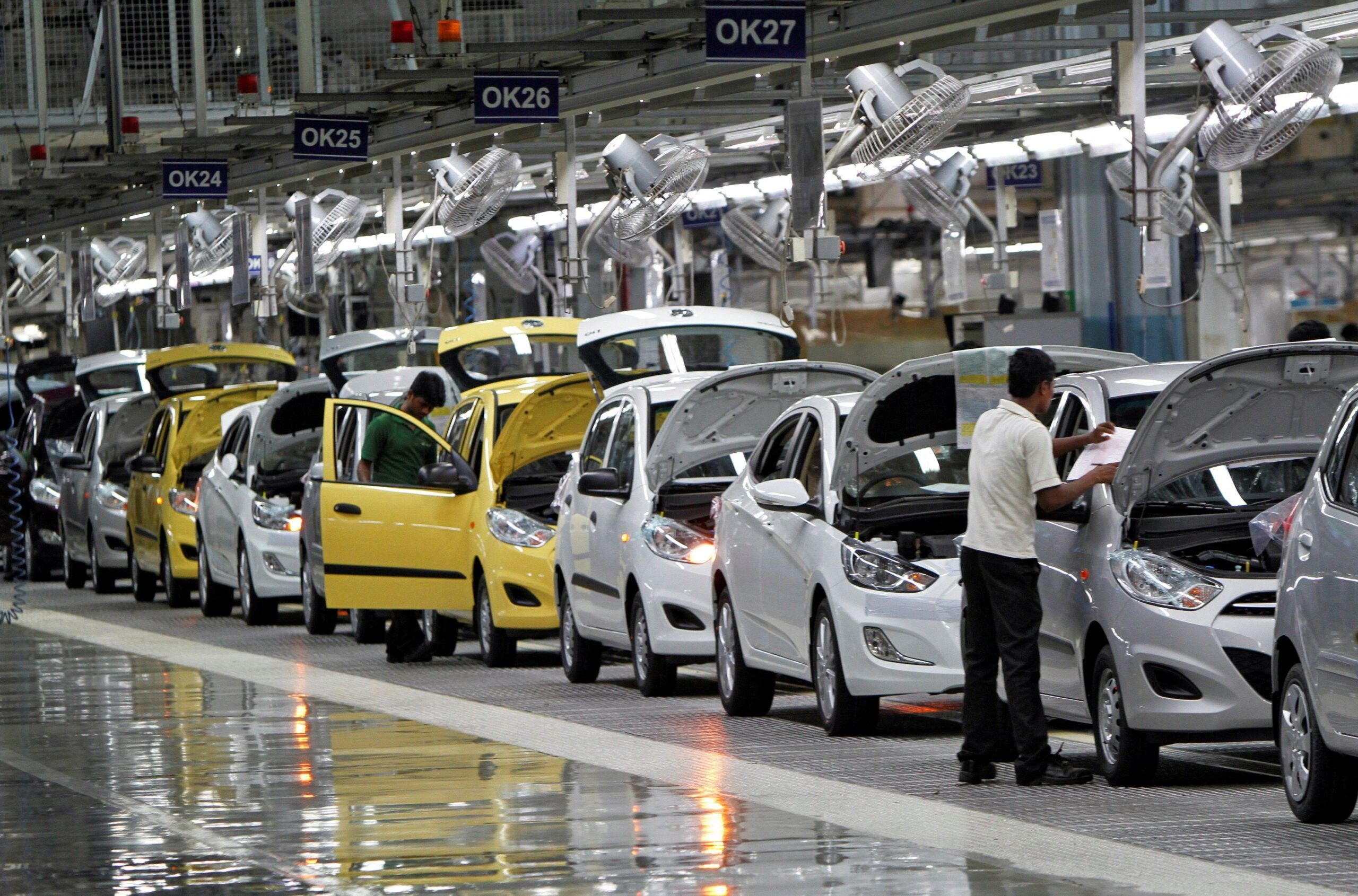- Wednesday, April 23, 2025
The latest domestic passenger vehicle wholesale figures shows that for the second straight month fewer vehicles were despatched to showrooms

By: Shajil Kumar
INDIA’S passenger vehicles market is now going through a rough patch with sluggish demand. This comes after a bumper 2023-24 financial year.
The latest domestic passenger vehicle wholesale figures show that for the second consecutive month, fewer vehicles were despatched to showrooms, as dealers claim they have been facing the problem of mounting inventories of unsold cars.
Automakers in India mostly report wholesale dispatches to dealers and not retail sales to customers.
The passenger vehicle despatches for August dropped 2-3 per cent year-on-year to about 355,000 units. In July, the sales were down 2.5 per cent to 341,510 units.
India’s largest carmaker Maruti Suzuki reported an 8.4 per cent drop in domestic sales in August to 143,075 units.
Hyundai recorded a decrease of 8 per cent at 49,525 units, while Tata Motors reported a decline of 3 per cent to sell 44,142 units from their year-ago sales in August.
This situation has arisen mainly due to two factors.
High inventory
Firstly, the Federation of Automobile Dealers Associations (Fada) and the Society of Indian Automobile Manufacturers (Siam) have divergent views on inventory.
Fada has been batting for a 30-day inventory, as Fada President Manish Raj Singhania recently told the media, “Anything above 30 days (of inventory) starts draining the dealership. We have a repayment cycle for every fund we take from the bank that we need to rotate in 60 days and pay back along with the interest.”
However, car manufacturers are encouraging dealers to extend this period from 60 to 90 days as it allows them to offload more stock onto dealers.
Singhania pointed out that this pushes dealerships to bear an additional month of interest costs and exacerbates the inventory problem.
Fada has been appealing to Siam from April onwards to resolve the crisis and the latter has finally relented.
Considering the distress being faced by the dealers, the automobile companies have now scaled down their despatches to showrooms.
According to Fada, its members are holding around 730,000 units — enough to cover over two months’ sales.
Both Fada and Siam are now pinning hopes on the forthcoming festival season, starting from Ganesh Chaturthi to Christmas, to stabilise the inventory to more healthy levels.
Fall in small car sales
Another factor that is dogging the manufacturers and showroom owners is the fall in small car sales, which once used to dominate the market.
In FY18, small cars constituted 47.4 per cent of India’s total passenger vehicles market share, but its share has been on the decline over the years.
Maruti Suzuki India Senior Executive Officer, Partho Banerjee recently told the Economic Times that the reason behind this decline has been a “steep increase in the prices of hatchbacks” due to a variety of reasons, including regulations related to safety and emissions standards. The purchasing capacity of small car buyers has not increased correspondingly, he opined.
Rise in SUV sales
Meanwhile, the sales of sport utility vehicles (SUV) are witnessing robust growth in the country.
The SUV segment’s market share in the total Indian PV market grew from 40.1 per cent in FY22 to 43 per cent in FY23, and further surged to 50.4 per cent in FY24. Indians are now buying more SUVs than sedans and hatchbacks.
Carmakers are now focusing on this segment, making them affordable by scaling down on certain features. While small cars have become pricier, compact SUVs appear only a little more expensive than the former.
This is not just attracting sedan and hatchback owners looking for an upgrade, but even many first-time buyers.
Hence the compact SUVs introduced by Hyundai, Maruti and others have become a big hit among Indian customers.
The high ground clearance makes it better equipped to negotiate the potholes and numerous speed-breakers on Indian roads. And its roomy interiors accommodate more people and luggage.
Hence, carmakers like Toyota, Mahindra, and Kia, whose portfolios are dominated by SUVs, faced no problems on the sales front during the past two months.
Even companies like Maruti Suzuki, Hyundai, and Tata that witnessed an overall slump in sales, their SUVs registered impressive growth.